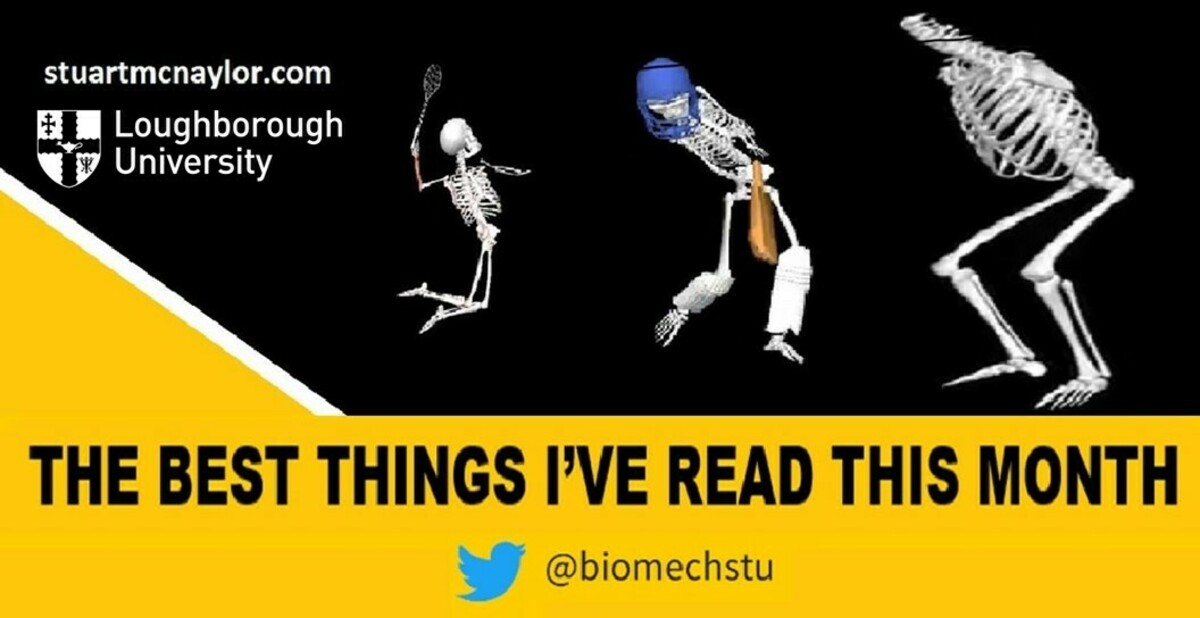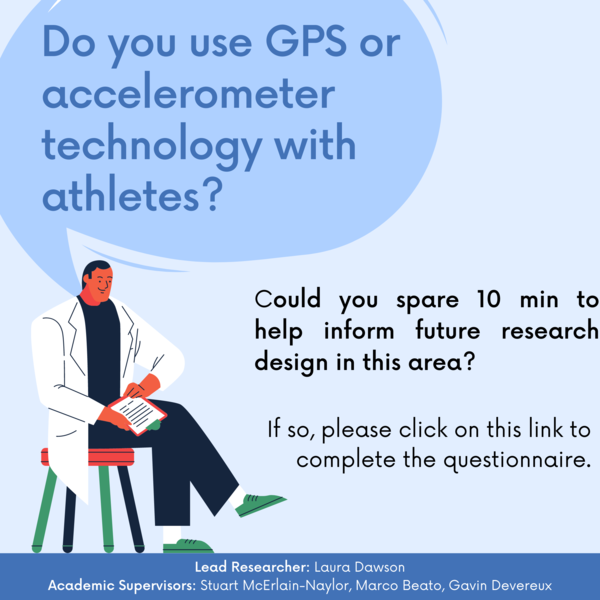
Welcome to my monthly update.
After some positive feedback regarding last month’s newsletter , I decided to have another go at summarising the best things I read all month.
But first, some brief personal updates…
GPS Technology with Athletes - Questionnaire
If you use GPS / accelerometer-based wearable technology in sport, we are interested in your opinions.
Please click the image below (or this link ) for Laura Dawson’s PhD study, looking to inform the direction of future research in the field. If you can spare 5-10 min to complete the survey, we would be very grateful. Your responses will help to inform future research questions, addressing the questions that practitioners genuinely want answers to.

International Society of Biomechanics in Sports
Last month I mentioned that I was standing for election to the ISBS Board of Directors. I am extremely honoured to have been elected to the Board! I’ve seen first hand what an excellent job the society does in engaging with members, communicating biomechanics research, and embracing new initiatives. You can find more information about the society here - membership includes free registration for this year’s conference and free access to recordings from the mid-year symposium .
What Have I Been Reading?
Now for the main part of the newsletter…
How to Analyze Research Data
Technically I didn’t read this; I watched it. Kristin Sainani presented a webinar (below) in which she walked us through the steps of a complete data analysis, using real data from an ongoing study. She provided practical, hands-on tips for how to approach each step of the analysis. I’m a huge fan of Kristin and the way in which she presents important topics in an easy to understand, interesting manner. This webinar follows on from previous talks on statistics and scientific writing (both part of my Sports Biomechanics Lecture Series ), as well as the really enjoyable ‘ How to be a Statistical Detective ’.
Biomechanics of the Badminton Smash
This excellent blog post by Harley Towler summarises the current research on factors associated with increased shuttlecock speed in the badminton smash. It is an incredibly detailed write-up of the literature, in terms that are hopefully understandable for players, coaches, and researchers alike. On a personal note, it’s great to see our studies on smash technique and racket-shuttlecock impact characteristics get a mention.
Biarticular Joint Torques in Simulations of Sporting Technique
In our recent review article on the use of simulation models to predict ‘optimal’ sporting technique, we discussed Martin Lewis’ work on biarticular (two joint) torque representations. Forward-dynamics simulation models of maximal effort sporting movements have predominately adopted monoarticular (single joint) representations, neglecting any unique effect of muscles that cross two joints (e.g. the hamstrings). I was therefore particularly interested to read Lewis et al.‘s new paper , which concluded that a two joint representation is likely to be more appropriate for simulating dynamic tasks requiring large joint torques and near-maximal joint velocities. This builds upon their previous dynamometer method and applications at the ankle , knee , and hip .
A Gymnastics Deep-Dive
For anybody interested in biomechanics or sporting technique, gymnastics offers many ideal case studies. The latest of these is Simone Biles’ performance of the ‘Yurchenko double pike’. If (like me) you have no idea what this is or why it’s so impressive, grab a coffee and have a scroll through this Twitter thread . Suzanne Boswell uses video examples to illustrate the historical development of this vault technique and each of its constituent parts. For more on the biomechanics and motor control of gymnastics, you can check out this lecture by Gareth Irwin.
Thank You
That’s all for this month. If you would like to share or recommend the newsletter then you can share this link .
Take care, and thank you for reading.
Stuart